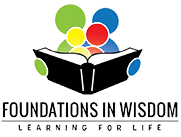Hear What Others Are Saying
“It’s like a framework for learning!”
– Joyce Shumard, Atlanta, GA
“It was really helpful for non-English speaking students. They feel like they are participating and doing what everyone else is doing. It really does get them started with their language, their development, and just so wonderful to see them successful at something so early on in the year.” – Blair Hickerson, Gainesville, GA
I really saw the difference in the classrooms and how they were really learning with the Rondo. How it really seemed to help the teachers with the second language learners. I enjoyed it, I learned a lot, and I’m planning to use it in my future classrooms.
“How did the children change?”
You could see them making those connections between the words and movements, them being able to really grasp those concepts a lot better. Using sign language really helps. – Maureen Sheddan, Kennesaw, GA
From a developmental standpoint, she’s really thought of everything. She’s looked at the fundamentals, the basics and she’s built on that, which is absolutely necessary when you are teaching children to read. She’s also tapped into every modality, where you have children moving, speaking, singing with rhythm and rhyme. It’s only going to set them up for success.
“Can you tell the difference between arts integration and other methods of instruction?”
When parents come back to you and say, “My child still remembers these things 5th, 6th, 7th, 8th grade when they were learning that way.
“When to start?”
The moment they are born…learning.
“What are the best ages for this learning method?”
I remember being in college and I would use different mnemonic devices to think of and remember whatever I needed to learn for the test. It is truly a lifelong technique that you can use to help them remember things. –
Sarah Leisan, Gainesville, GA
